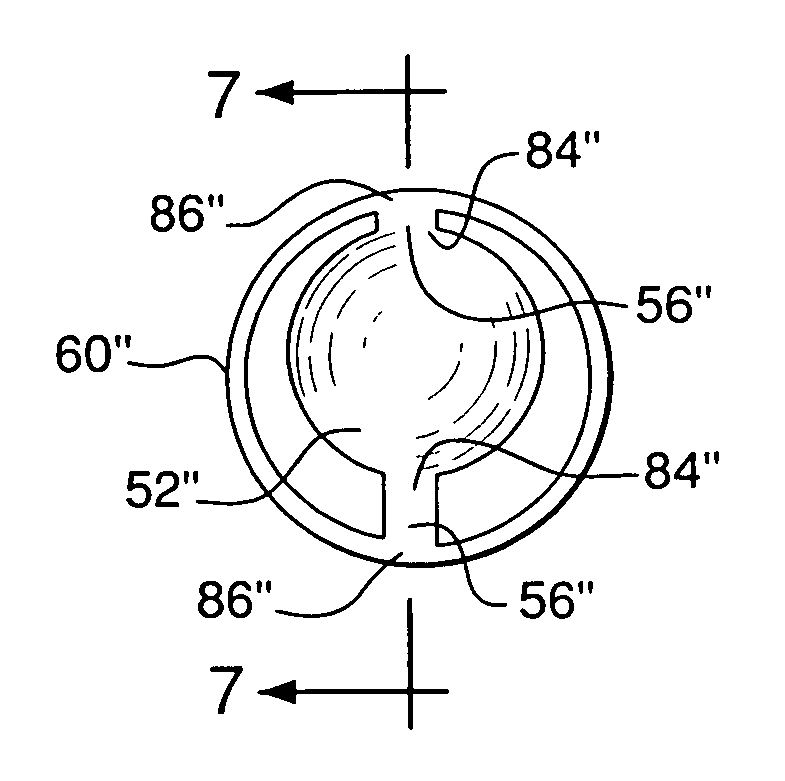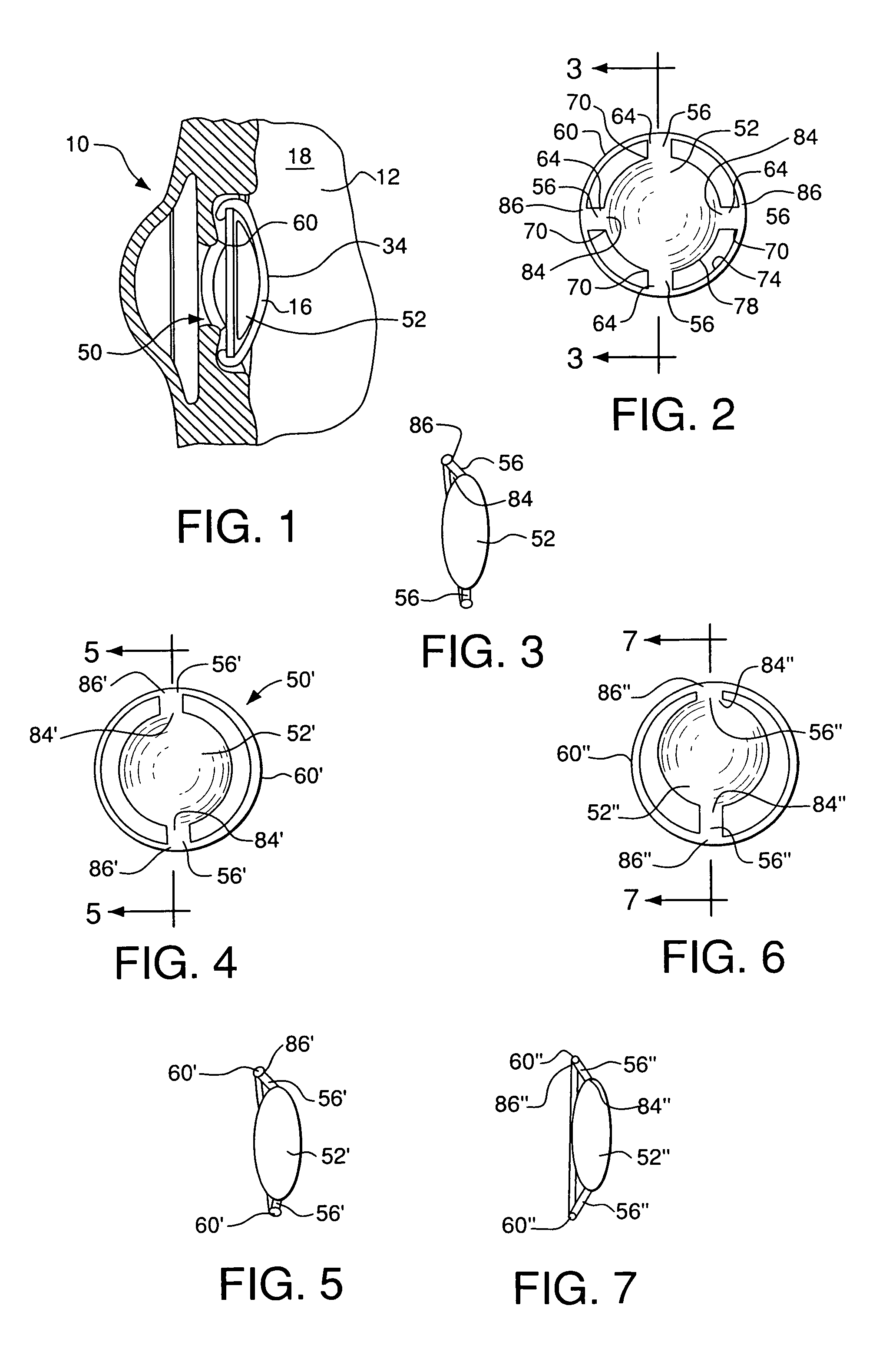Intraocular lens assembly and method
a technology of intraocular lens and assembly method, which is applied in the field of intraocular lens, can solve the problems of patient halos, inability to see halos, and inability to accommodate the majority of people,
- Summary
- Abstract
- Description
- Claims
- Application Information
AI Technical Summary
Benefits of technology
Problems solved by technology
Method used
Image
Examples
Embodiment Construction
[0029]Now referring to the drawing wherein like numerals indicate like elements FIG. 1 shows a partial cross section of an eye 10.
[0030]The eye 10 includes a posterior compartment partially shown at 12. The posterior compartment 12 supports the retina at its posterior (not shown) and the lens capsule 16 at its anterior. The posterior compartment 12 carries the vitreous humor 18.
[0031]The intraocular lens assembly 50 of the invention is implanted in the posterior chamber 34 of the eye 10 after the nucleus (not shown) is removed. As best seen in FIG. 2, it includes an optic disc 52 which is connected by a plurality of hinges 56 to a haptic. The haptic is in the form of an annulus 60 which extends around the optic disc 52.
[0032]Advantageously, the optic disc 52 is about 7.00 millimeters in diameter. This has the effect of reducing the occurrence of the halos and glare that is common with optic discs of smaller diameter and assures better centration.
[0033]Further, the annulus 60 prefera...
PUM
 Login to View More
Login to View More Abstract
Description
Claims
Application Information
 Login to View More
Login to View More - R&D
- Intellectual Property
- Life Sciences
- Materials
- Tech Scout
- Unparalleled Data Quality
- Higher Quality Content
- 60% Fewer Hallucinations
Browse by: Latest US Patents, China's latest patents, Technical Efficacy Thesaurus, Application Domain, Technology Topic, Popular Technical Reports.
© 2025 PatSnap. All rights reserved.Legal|Privacy policy|Modern Slavery Act Transparency Statement|Sitemap|About US| Contact US: help@patsnap.com


